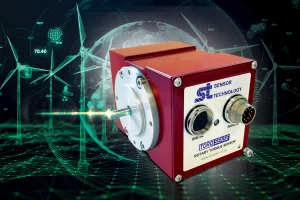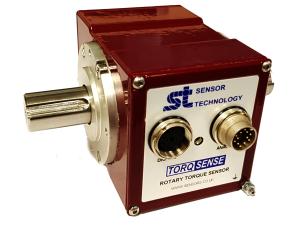Power generation around the world is turning greener almost by the day. To many this seems like an almost instantaneous response to a problem that was identified only a few years ago. But in reality, work on the underlying technologies has been underway for a generation or more, as Mark Ingham of Sensor Technology Ltd recalls.
Renewables will become the major source of electricity in the UK, Europe and North America within the next few years. Similar trends are evident around the world: Albania, Iceland, and Paraguay already claim to use 100% renewables; Costa Rica, Kenya and Norway put their green generation above 95%. Scotland and Portugal are over 90% hydro-with more green capacity in planning. India and China are working on major projects, and many many countries are increasingly turning to their natural resources of wind, solar, hydro, biomass or geothermal.
The move away from fossil fuels is almost universal, while nuclears susceptibility to natural disasters, technological failures and possible human attack along with its long and expensive build requirements means it is never going to have unalloyed public and political backing.
 One major advantage of renewable technologies is that they are easily scaleable. A hydroelectric turbine can be added to an existing weir at little cost and power maybe dozens of homes or even a whole town; a farmer can erect a solar array in a field or two without displacing the livestock; small local wind farms could be a valuable addition to the national generating grid, the backbone of which could be major offshore wind turbine installations, big hydroelectric schemes, tidal and ocean current systems.
One major advantage of renewable technologies is that they are easily scaleable. A hydroelectric turbine can be added to an existing weir at little cost and power maybe dozens of homes or even a whole town; a farmer can erect a solar array in a field or two without displacing the livestock; small local wind farms could be a valuable addition to the national generating grid, the backbone of which could be major offshore wind turbine installations, big hydroelectric schemes, tidal and ocean current systems.
The more individual generating sites there are, the more robust and resilient the overall national system becomes.
However, this also means an increase in the numbers of connections to the distribution network. A while ago Sensor Technology was involved in a research project studying the use of power electronic devices to control the power flows and voltages that will enable loads to switch on and off within the distribution network. To test various power electronic controllers the research team built a test rig to simulate variable loads.
The rig used two induction machines which mimic the generator and load. A TorqSense transducer between the two mapped the performance of the machines, enabling voltage and current to be linked with torque and so provide an accurate picture of the requirements of a controller.
The performance of many different controllers were fully mapped enabling the team to identify the best equipment for each type of installation and also to extrapolate fundamental principles for the design of future controllers.
At the other end of the scale from the National Grid, Sensor Technology recently helped explore the capabilities of small vertical axis wind turbines. The project needed a reliable supply of wind, so was based on the Northumbrian coast facing the North Sea – in January and February. This required robust equipment and determined researchers – TorqSense passed with flying colours; team members didn’t do too badly either!
Vertical axis wind turbines tend to be quieter and safer than conventional ones as the leading edges of the rotor cannot exceed the wind speed. Also, efficiency and consistency of output is high because they do not need to turn into the wind. Their design and construction is relatively simple because there are few unbalanced or overhanging loads and they are less visually obtrusive from a distance.
The trials ran for a week, data generated by the TorqSense mapped torque output with prevailing wind speed. Ultimately the project established power coefficients and help optimised turbine design criteria.
Another abundant resource is water and Sensor Technology has been involved with several development projects to harvest energy from natural flows. One project, to develop an efficient and cost-effective marine hydrokinetic turbine, tested it prototypes in the open sea rather than laboratory tanks. Initially a simple De Prony Brake was used for torque measurement, but when more sophisticated and reliable mapping was required, the engineers switched to Sensor Technology’s TorqSense.
Robust and reliable, TorqSense was a natural fit with the wet, stormy and salty marine environment. Its radio frequency communications means it can easily transmit data to a remote station in real time, and this can instantly be analysed by dedicated software to produce a complete mapping of the turbines’ performance.
Another TorqSense has sat on a floating pontoon in the Thames, just upstream of Richmond Bridge, logging the performance of a new type of hydroelectric power generator. The 1m turbine under test is designed for deployment in rivers, and will generate about 1kW of power when optimised to the local flow rate. With the engineers working from small boats simple set up of the monitoring equipment was essential, and as test runs could extend over several days and nights, reliability was a must.
The generator is based on a Hales turbine, which looks somewhat like a traditional water wheel turned on its side, with one half protruding from its housing. Its slow rotation (5-50rpm) minimises stress on moving parts and causes virtually no habitat disturbance. TorqSense is well able to run at this speed and can be mounted vertically, as required in this project.
Once proven, larger 5m/20kW turbines are expected to be developed for inshore use. Eventually even larger units could be installed far offshore or in deep water environments. Arrays of them could run for many miles along the coast or on riverbeds. They would be invisible, reliable and cause no substantive environmental impact.
Sensor Technology has been involved in many other projects at the forefront of green energy development and expects this sector to continue to expand for at least a decade. Most countries are aiming for 100% low- or no-carbon power generation by the middle of the century and electrical companies are recruiting the best engineers to push new technologies to ever greater performance.





